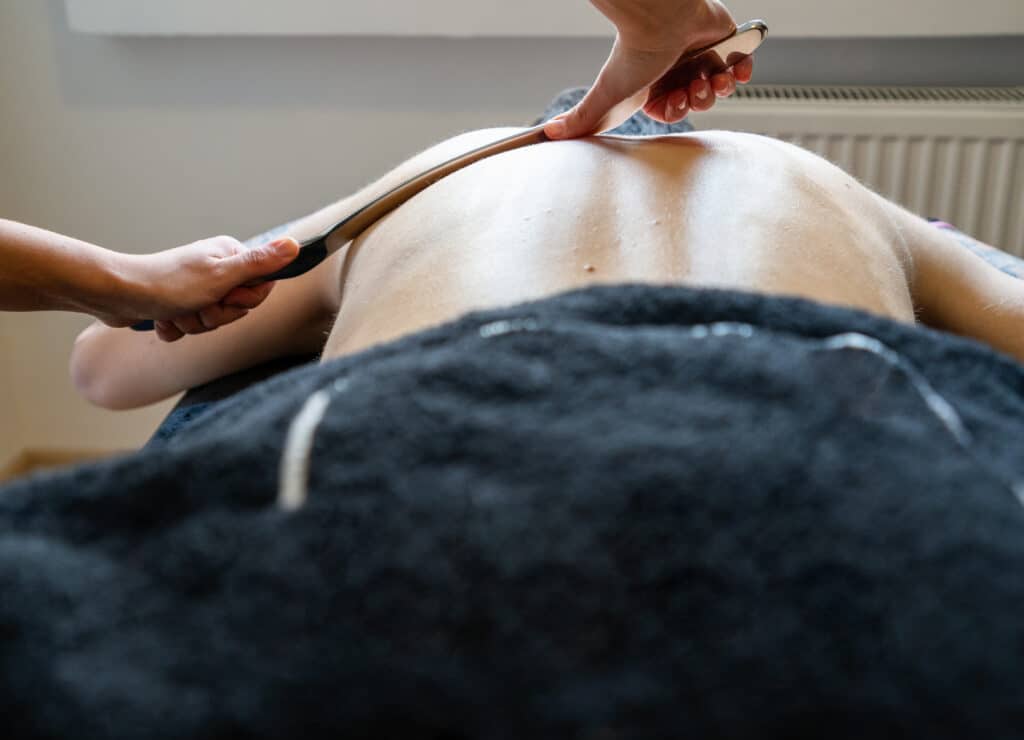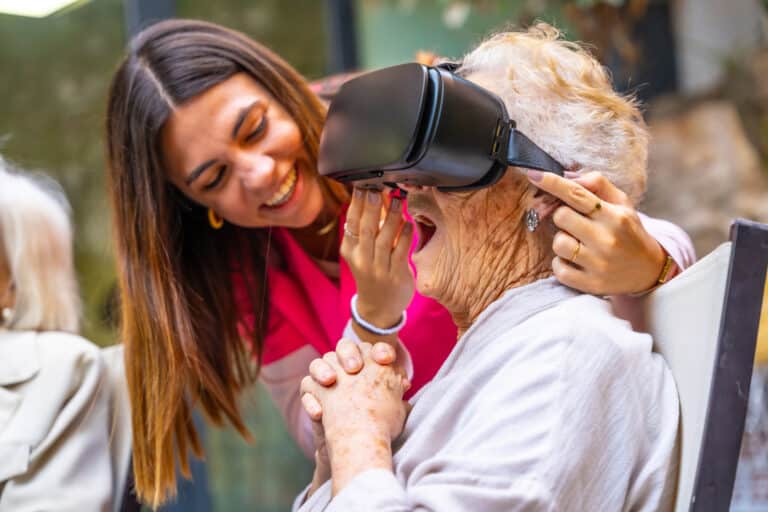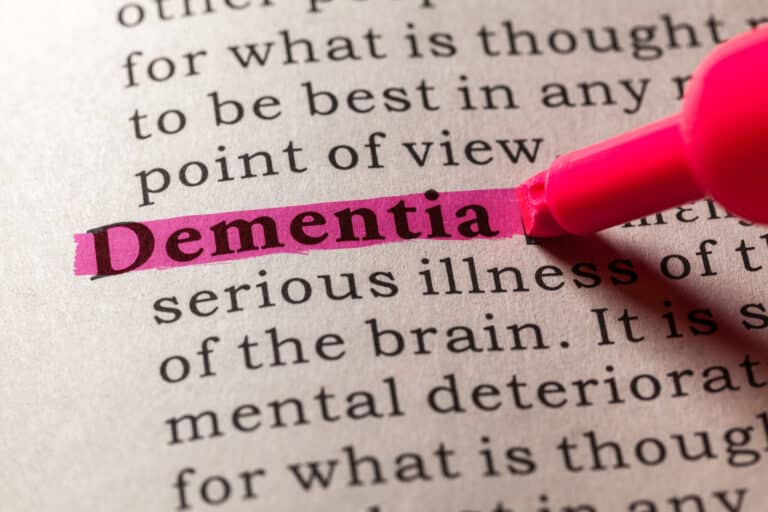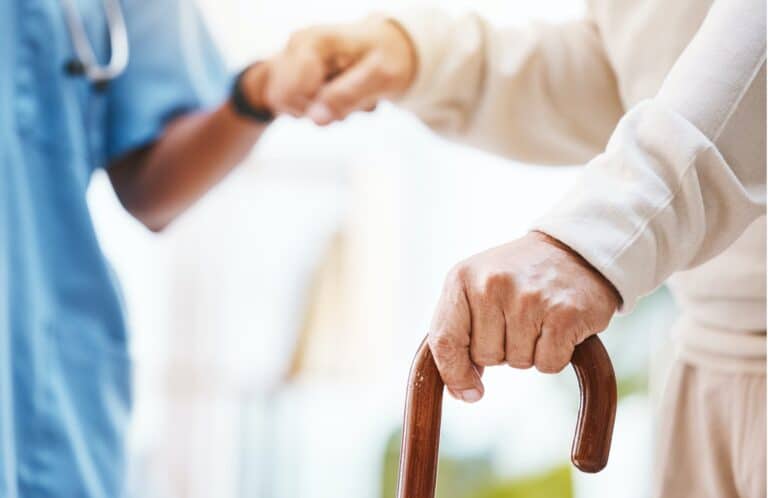The Graston® Technique, a form of Instrument Assisted Soft Tissue Mobilization (IASTM), has been gaining attention due to its potential to enhance mobility and alleviate pain.
In this article, we’ll explore this innovative approach and discuss how each can help improve muscle and joint function. We’ll also examine how IASTM compares to traditional treatment methods.
Additionally, we’ll examine the Graston Technique’s specialized tools and the pros and cons of this treatment method.
Whether you’re considering these treatments or simply curious, this overview provides valuable insights into choosing the best approach for musculoskeletal health.
How Soft Tissue Mobilization Works
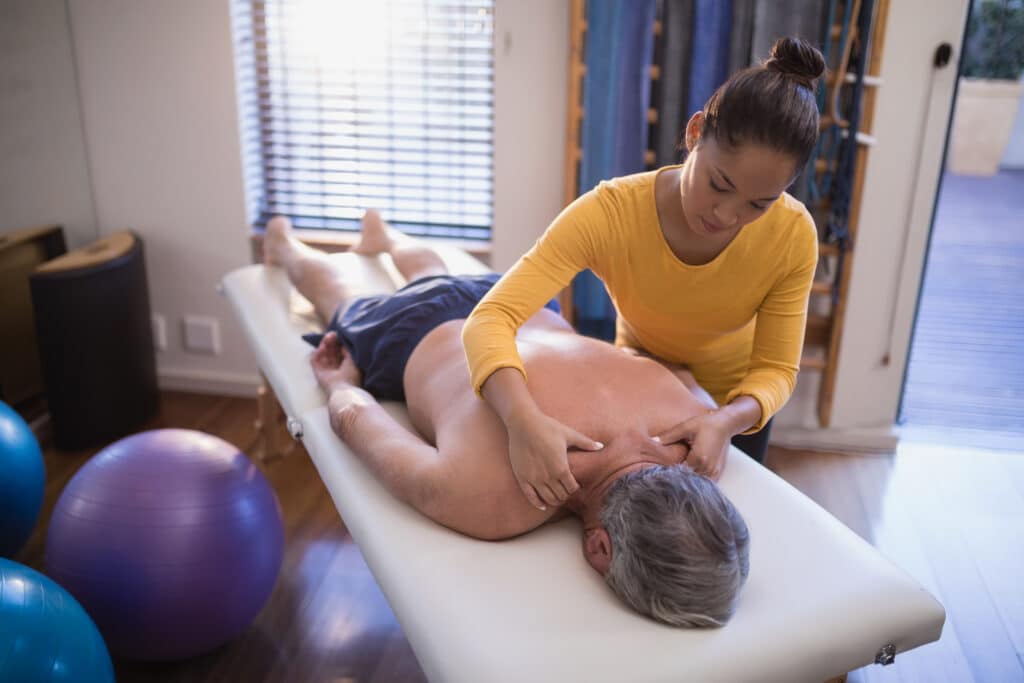
Soft tissues—muscles, tendons, ligaments, and fascia—play a critical role in movement, stability, and overall bodily function. They help joints move smoothly and provide support and protection to vital organs.
Soft tissue mobilization is crucial in physical therapy to address musculoskeletal issues and enhance tissue health. This technique relieves tension, breaks down adhesions, and improves mobility to reduce pain and improve movement.
Therapists use their hands to use traditional soft tissue mobilization techniques, including trigger point release and deep tissue massage.
These methods allow therapists to feel and manipulate the tissues to release tightness, increase circulation, and promote tissue repair.
What is IASTM?
Instrument-assisted soft tissue mobilization (IASTM) uses specially designed tools to enhance the effectiveness of traditional methods.
These tools are designed with unique shapes and edges to target problem areas. This approach is intended to improve treatment outcomes while reducing strain on the therapist’s hands and joints.
Manual and instrument-assisted techniques aim to remedy soft tissue dysfunction but differ in application and effects. Manual methods provide immediate tactile feedback and can be adjusted in real time to suit a patient’s needs and responses.
The Graston® technique uses a standardized approach with specific protocols and tools. This method allows for more controlled and deeper pressure on the tissues.1
The choice of technique depends on the patient’s specific condition, the therapist’s expertise, and the desired treatment goals. Both methods are intended to help patients achieve better function, experience less pain, and improve their quality of life.
How the Graston Technique Differs from Other Therapies
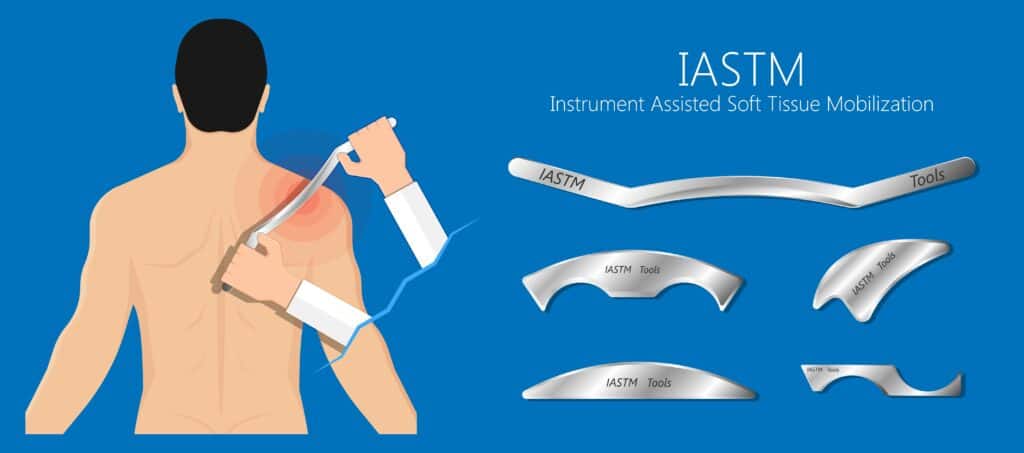
The Graston Technique is a form of IASTM that uses specially designed stainless steel instruments to target soft tissue dysfunction.
Unlike other IASTM tools and techniques, the Graston Technique employs patented instruments designed to enhance treatment while minimizing patient discomfort. These unique instruments set the Graston Technique apart from other methods in its field.1
At the heart of the Graston Technique is a structured treatment protocol. This typically includes a preliminary evaluation to identify problem areas in the soft tissue. The initial examination is followed by the precise application of treatment.
The technique uses specific strokes tailored to meet the individual needs of the patient and address their particular needs.
It’s important to note that clinicians who want to use the Graston Technique must undergo a certification process. Although costly, this certification ensures that practitioners are trained to use the Graston instruments and protocols effectively.
Healthcare providers continue to debate whether the benefits of the Graston® Technique surpass those of other IASTM methods.
Uses of the Graston Technique and IASTM in Clinical Practice
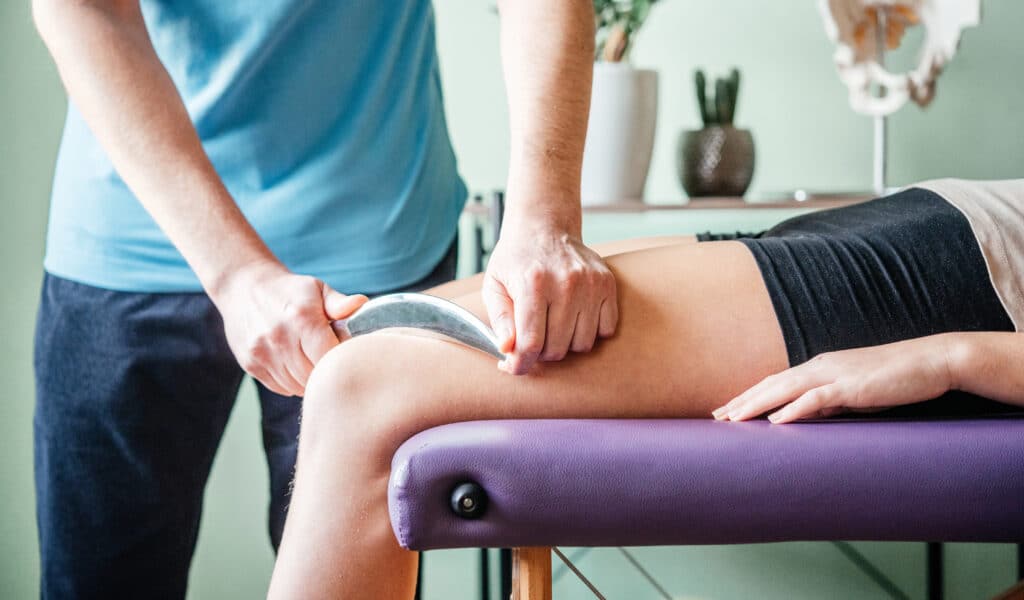
Instrument-Assisted Soft Tissue Mobilization (IASTM) is increasingly used in clinical practices. It offers a valuable addition to traditional manual therapy for treating musculoskeletal conditions.
Trained therapists use IASTM to address musculoskeletal issues, including soft tissue injuries such as strains, sprains, and tendonitis. This technique helps break down scar tissue, promotes healing, and restores normal function.
Benefits for Patients and Practitioners
IASTM is effective in managing chronic pain conditions, such as myofascial pain syndrome and fibromyalgia. IASTM appears to be effective in reducing pain and muscle tension.
Additionally, it addresses joint dysfunction by improving mobility and range of motion in conditions such as osteoarthritis and adhesive capsulitis.
IASTM offers several advantages over manual therapy alone. The specialized instruments enable therapists to target soft tissue dysfunction precisely. They can apply controlled pressure and shear forces to break down adhesions and scar tissue effectively.
This focused approach promotes tissue remodeling, enhances circulation, and accelerates healing, improving patient outcomes.
These tools also provide ease of use for practitioners. Therapists are susceptible to strain from the intensive use of their hands. IASTM devices can be easier on their hands, making them beneficial for patients and practitioners.
Proponents of the Graston technique also highlight its standardized protocols and systematic approach, ensuring consistency and reproducibility in treatment sessions.
Combined with the mechanical benefits of using instruments, this sets IASTM apart from manual therapies. It provides clinicians with a versatile tool for managing musculoskeletal conditions.
While manual therapy remains a fundamental part of rehabilitation, incorporating IASTM techniques broadens the palette of available therapeutic options.
IASTM might seem more technologically advanced and appealing. However, as a physical therapist, I advise patients to carefully research all treatment options. Sometimes, simpler, time-tested methods may offer the best solution.
A Closer Look at IASTM’s Effectiveness
Recent studies, including some rigorous randomized controlled trials, suggest that IASTM methods like the Graston® Technique can effectively manage musculoskeletal issues. 2,3
These studies typically show improvements in reducing pain, enhancing function, and increasing joint mobility. However, it’s essential to consider these findings with healthy skepticism due to variability in testing.
While there is some support for the efficacy of IASTM, studies offer mixed or inconclusive results. Critics point out that the evidence for IASTM’s effectiveness can be inconsistent. They may be weakened by small sample sizes, varied patient groups, and differences in how treatments are applied. The debate over the value of IASTM in improving joint mobility and treating musculoskeletal conditions is ongoing in the industry.
Despite the controversy, IASTM remains popular among clinicians, who are encouraged by anecdotal evidence and patient feedback. Proponents believe IASTM complements traditional manual therapy well, providing a valuable alternative for tackling soft tissue restrictions and fostering healing.
However, calls for more detailed and robust research persist, emphasizing the need to establish how IASTM works and its effectiveness.
Both healthcare providers and patients should weigh the evidence carefully and consider personal health factors when integrating IASTM into treatment plans. A practitioner’s main concern should still be striving for truly informed care tailored to individual needs.
Comparing Manual Therapy and Instrument-Assisted Techniques: Pros and Cons

Instrument-Assisted Soft Tissue Mobilization (IASTM) has distinct advantages and disadvantages in clinical settings.
IASTM offers patients a noninvasive, drug-free approach to managing musculoskeletal conditions, alleviating pain, improving range of motion, and restoring function.
This makes it possible for patients to return to their daily activities more comfortably. IASTM is suitable for people of all ages and activity levels. It is particularly appealing to athletes and seniors aiming to maintain mobility.
Some patients prefer IASTM over traditional manual therapy due to its unique sensory feedback and the novelty of using specialized instruments during treatment.
However, IASTM might be uncomfortable for those sensitive to pain and pressure. Despite its perceived benefits, the evidence supporting IASTM’s superiority over manual therapy is limited, and further high-quality research is needed to confirm its efficacy and safety.
For healthcare providers, IASTM is a valuable addition to the therapeutic toolbox. It allows for greater precision and consistency in treatment, reduces physical strain during sessions, and potentially enhances treatment effectiveness.
IASTM can be integrated into existing protocols, offering a versatile modality for various conditions and enabling targeted, effective treatments.
Key Takeaways
- Soft tissue mobilization, including IASTM, is essential for addressing musculoskeletal issues, enhancing tissue health, and improving mobility.
- IASTM uses specially designed tools to target soft tissue dysfunction more precisely than traditional manual techniques, potentially improving treatment outcomes.
- The Graston® Technique, a specific form of IASTM, utilizes patented instruments and a structured protocol to provide deep tissue manipulation to enhance recovery.
- While some patients prefer IASTM for its unique approach and sensory feedback, others may find the techniques uncomfortable.
- The effectiveness of IASTM over traditional manual therapy is still debated. Studies’ mixed results highlight the need for further high-quality research.
- IASTM offers clinicians a valuable tool to reduce physical strain and enhance precision in targeting soft tissue issues.
References
- Cheatham, S. W., Lee, M., Cain, M., & Baker, R. (2016). The efficacy of instrument assisted soft tissue mobilization: a systematic review. The Journal of the Canadian Chiropractic Association, 60(3), 200–211.
- Kim, J., Sung, D. J., & Lee, J. (2017). Therapeutic effectiveness of instrument-assisted soft tissue mobilization for soft tissue injury: mechanisms and practical application. Journal of Exercise Rehabilitation, 13(1), 12.
- Lambert, M., Hitchcock, R., Lavallee, K., Hayford, E., Morazzini, R., Wallace, A., … & Cleland, J. (2017). The effects of instrument-assisted soft tissue mobilization compared to other interventions on pain and function: a systematic review. Physical Therapy Reviews, 22(1-2), 76-85.

